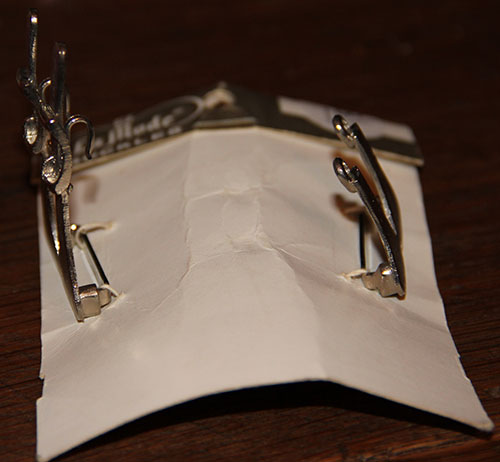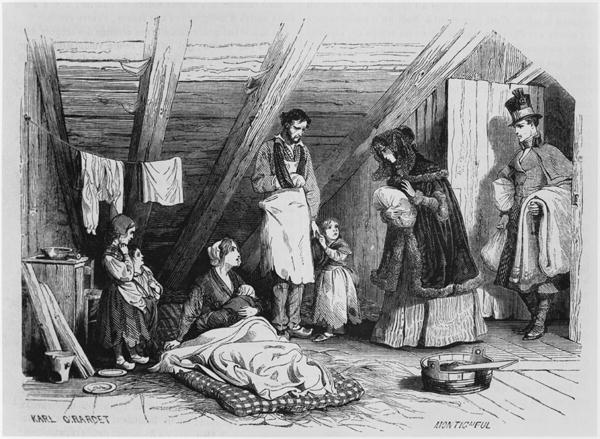My Favorite Marlowe
April 29th, 2013
Lots of actors have taken on Raymond Chandler’s quintessential private eye Philip Marlowe, including Humphrey Bogart, Robert Montgomery, Dick Powell, Robert Mitchum, and James Garner. But by far my favorite Marlowe is the one you’ve never seen on the screen.

That’s right, Gerald Mohr played the wise-cracking gumshoe in a 3-year-long radio series based on the novels, with script help from Chandler himself. I’m not sure why Mohr never played Marlowe on film, but he sure nailed the character on radio. He also did a stint as Archie on Nero Wolfe — he’s my favorite in that role too.
One of the great things about a character like Philip Marlowe is that he’s become so integrated into the culture he’s taken on a life of his own, separate from creator Raymond Chandler. Springing from the pages of a detective-story magazine in 1939, Marlowe went on to shoot and drink his way through a series of novels, films, and radio plays in the 1940s through 70s, not to mention a fair number of modern tributes in every imaginable medium, including a video game.
If I had to live my life as a fictional man in 1940s Los Angeles, I’d definitely want to be Marlowe.
Little Yellow Bird
April 25th, 2013
My incorrigible husband recently fulfilled his long-time aspiration to acquire a canary. And this isn’t just any bird. He’s a real dynamo — a professional singer with pipes and ego to match. We picked him out because he was beating up all the other birds in the aviary at the pet shop. Aggression seems to be an indication of talent in birds…

Girl with Canary, by Seymour Joseph Guy
Canaries are also a very 19th-century pet. Many ladies kept them to brighten the parlor, housing them in elaborate and decorative cages. Household manuals of the time often included articles on caring for your bird. And here is an excerpt from the introduction to Canary Birds: A Manual of Useful and Practical Information for Bird Keepers, 1869:
A great many people think that to confine birds is cruel. If it were so, indeed, few would be the cage birds one would wish to see; but happily, on the contrary, for those who, like myself, are fond of the little songsters, the more we know about them, the more we are satisfied that theirs is a happy prison. Not for all birds by any means; some would break their hearts, if confined in a cage. The birds of passage, all those that come and go, should never be kept from the sunny skies they seek as winter comes. But with the Canary, as well as a variety of other birds, reared in cages and knowing nothing of that freedom upon which depends almost the existence of their wilder brethren, it would be cruel to expose them to the misery of being loose, little, shivering, trembling strangers, in an unkindly crowd. Poor little creatures, if one of them does get out, how fast it flies to seek some friendly cage; it knows not the language, the ways, and fashions of the birds around it, nor yet does it always meet with the kindest welcome from them. Besides, our canaries want petting—they have no wish, so their gay song tells us, to seek a dirty puddle instead of a crystal bath; to hide from the rain and cower from the cold, instead of hanging singing in a warm pleasant room. Most people forget to reckon on the birds’ social habits; nor do they give them credit for half their loving ways. Canaries are often wild and show fear whenever approached by those who have never shown them kindness. This arises from a natural, and a very proper suspicion, of mankind. Their instinct tells them that the human race are inherently savage; and till they have some convincing proof to the contrary, they never change this, their very correct opinion. To be teased, frightened, slighted, or neglected, is their too frequent fate. But we may add with a deep feeling of pleasure, there are ” exceptions” to all rules, and we know that there are many, many gentle hearts who do love” their birds—aye, and hold converse with them too.
The new little bird has already learned to eat his morning greens from our fingers, and when we aren’t in the room he peeps desperately to hear our answering call. Most of all, he just loves to sing. My husband, a professional musician and radio DJ, exposes him to every style and genre of music imaginable. So far, the canary likes Scriabin, Elvis, Jim Morrison, and the Andrews Sisters, to name a very few. He’s also passionately fond of Linda Ronstadt, or pretty much any high female voice. I’ve even gotten him to sing along with me a few times.
Historian Mary Knapp, my erstwhile mentor and dear friend, introduced me to this poem by Walt Whitman, which sums up our feelings about the bird quite nicely:
My Canary Bird
Did we count great, O soul, to penetrate the themes of mighty books,
Absorbing deep and full from thoughts, plays, speculations?
But now from thee to me, caged bird, to feel thy joyous warble,
Filling the air, the lonesome room, the long forenoon,
Is it not just as great, O soul?
Shall I wrap that up for you?
April 19th, 2013
I’m just barely old enough to remember shopping in a real department store — with a clerk behind each counter, ready and eager to display their wares for your selection. Yeah, I know Macy’s, Saks, and Bloomingdale’s still have counters in some parts of their stores, but it’s not like the old days. To whit, Auntie Mame and the roller skates, or Mary Livingstone at the May Company. That magical moment when you say “I’ll take it — please wrap it up and have it sent to my hotel.”
While shifting my yarn stash into its new tower earlier this week, I emptied out these boxes, relics of the department store days.

This hat box from J. C. Penneys is older than I am. It probably came from my grandmother’s house. Based on the font, I’d say it’s 1970s.

This one goes back to my childhood — I can still remember buying Christmas presents (leather gloves and a wallet for my father) at the Newark Department Store in the little (then) college town where I grew up. Merchandise wasn’t just laying around to sift through, you had to go up to each glass display counter and point to what you wanted, or wait for the clerk to show you a hidden bargain. Clothing was on racks in the center of the store. Downstairs there were housewares, a bargain basement section, and a counter with clothing and supplies for girl and boy scouting.
After a shopping trip, it was next door to Woolworth’s for grilled cheese at the counter. Then we’d look at the parakeets in their little compartments, waiting to be taken home. Sigh.
Gee, I’m not usually so maudlin. Must be spring fever setting in.
Buckle Up
March 25th, 2013
Oh dear, I’ve let things slip again. Or more accurately, I’ve simply been too busy doing everything else to take time to do anything worth writing about.
But I did find this neat vintage buckle at a thrift store this afternoon…

It’s got bars on either side to attach a fabric belt, and the two cast metal buckles in the center hide little hooks and eyes.

It could pass as 1930s/40s, but I think it’s more likely 1960s/70s…
A Seaman’s Watch Cap
January 10th, 2013
Charity knitting was a popular pastime among ladies of the newly leisured industrial class during the mid-19th century. Before the advent of government sponsored welfare programs, women of means helped bridge the gap for poorer families by providing baskets of food and practical clothing (like warm socks or serviceable shawls). They were often motivated by religious duty as much as their own generosity. In addition to sponsoring indigent locals, ladies might also target other deserving groups, such as missionaries or sailors, with the fruit of their needles.

Visiting the Poor, from La Magasin Pittoresque, 1844
Fast forward to the late-20th century, and you find that many women are still eager to knit for those in need: hats for preemies, sweaters for penguins, and all sorts of other worthy causes. My own grandmother’s pet knitting charity was the Seamen’s Center, Port of Wilmington. It’s a service of the Episcopal diocese of Delaware, offering accommodations, clothing, and much more to merchant seamen while they are in port. Along with her guild, Gram knitted countless watch caps to warm chilly heads on the open seas.
While cleaning out my studio this week, I came across her last hat, maroon with a double white stripe above the band. It was nearly finished — I just had to sew the seam up the side. I wrote a little note explaining who’d made the hat, and her long-time dedication to their cause, and mailed it to the Seamen’s Center. Then I remembered that she’d given me a copy of the watch cap pattern years ago.
I whipped up this variegated version in a matter of hours.

Only I had to promise my husband that he could keep the hat before he’d agree to model it, so this watch cap isn’t going to sea. But the next one will. And the one after that.
Would you like to knit a watch cap too? The pattern is linked below. I didn’t write it, but I figure it’s okay to share on the honor system — which means, if you want to use it, you have to knit at least one watch cap to donated to the Seamen’s Center. Their address is listed on the document. There’s no deadline, no rules about color or fiber content.
Seamen’s Center Watch Cap Pattern
If you do make a cap, I’d love to see a picture. Leave me a link to your blog or photo page in the comment area of this post.
Older Posts »